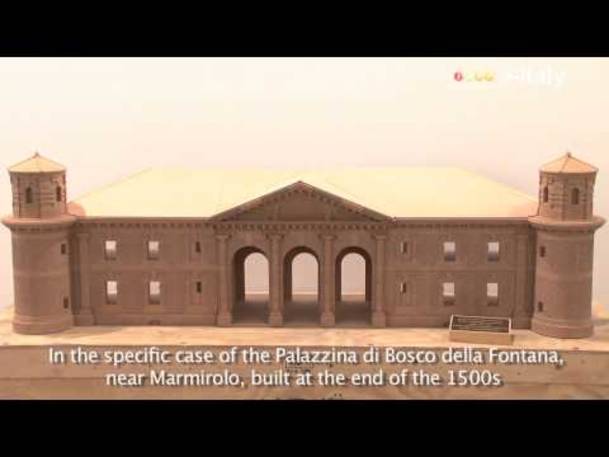


Many of us that have had the opportunity to wander the countryside of Italy have marveled over the stunning elegance of the villas, which seem not only to be perfectly fused into the natural surroundings, but to form this marvelous scenery. These villas are architectural wonders, planned with the utmost precision and meticulousness, often not with the focus on functionality but on style, trend and design. Most of these built during the Italian Renaissance period are the essence of this historical period.
Now until October 21st, Casa Italiana Zerilli-Marimò of NYU hosts an exhibit titled The
Bastions, The Portico and the Farmyard curated by the Italian architect Alberto Faliva. The exhibit is composed of wonderfully detailed, wooden models of 16th century Italian countryside villas. This eye pleasing presentation has a more significant purpose, as it introduces the viewer to the little known concept of the pseudo-fortified villa. Faliva, overcoming the difficulties of tedious research on this subject, presents us with a complete study of eight surviving 16th century villas in the region of the valley of the Po river known as Pianura Padana.
These fairytale-like country retreats share unusual architectural features consisting of military elements (merlons, towers, moats), and look like small fortresses rather than typical country estates commonly constructed all throughout the Italian countryside. It is this shared characteristic that fascinated Faliva as he began his arduous research on a topic that was insufficiently examined to this point. In his treatise he raises some intriguing questions pertaining to the purpose of the fortification of these villas and whether this fortification was real or merely symbolic in nature. He curiously investigates the popularity of this type of structure in this particular area of Italy, which is the sole host of these eccentric architectural finds.
This unique exhibit is a must see not just for all those interested in the Italian Renaissance but everyone that enjoys the introduction of new ideas and concepts or simply would like to get momentarily carried away to the atmosphere of the past.
Pick up a copy of the catalogue which accompanies the exhibit and read the full contents of Faliva’s detailed study where you will find attention grabbing historical information that clarifies the unfamiliar, yet captivating concept of the pseudo-fortified villa. It also contains color photographs of the authentic villas to further assist in the examination of the models on display.
The exhibit is open Monday through Friday from 10 AM to 5 PM. You may find more information at: http://www.casaitaliananyu.org [2]
Source URL: http://test.iitaly.org/magazine/focus/art-culture/article/towers-portico-and-farm
Links
[1] http://test.iitaly.org/files/towers-portico-and-farm
[2] http://www.casaitaliananyu.org